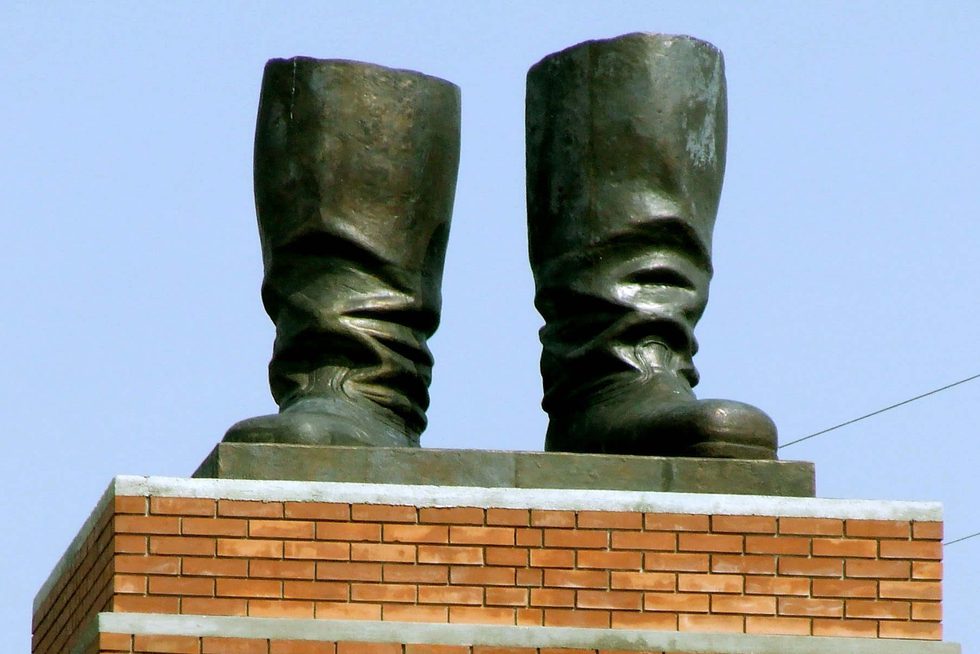Corruption Kills
From the Series: Lessons for Liberalism from the “Illiberal East”
From the Series: Lessons for Liberalism from the “Illiberal East”

For several weeks in February 2017, more than a quarter million protesters occupied a main square of Romania’s capital, Bucharest. Enduring subzero temperatures and falling snow, the crowd demanded the retraction of a government decree, which had been issued in the dead of night, decriminalizing graft involving sums of less than L200,000 (approximately U.S. $48,000). The spontaneous and sustained protest in support of democratic accountability captured the imagination of Western commentators fatigued by events within their own borders: rising populism, waning governmental oversight, and a growing tolerance for political leaders with opaque business interests. In Donald Trump’s America, for example, news outlets from the Los Angeles Times to the Washington Post coupled images of Bucharest’s swelling squares with declarations that Romania had emerged as “democracy’s improbable beacon of hope.”
The palpable surprise underlying such editorial declarations stems from a Romanian civil society readily interpreted through the residuals of its socialist past. As the news accounts mentioned above noted matter-of-factly, Romanians are often characterized as politically apathetic and as having a resigned tolerance for bribery. While Western observers take corruption to be a generalizable problem of postsocialist Eastern Europe, EU officials have singled out Romania as a particularly egregious case in point, turning the issue of corruption into a site of sustained political and economic intervention. Following Romania’s accession in 2007, the European Union instituted monitoring and oversight measures in an effort to curb corruption. The Romanian government’s midnight efforts at decriminalization, then, undermined a decade-long attempt at reform. However, following the public’s sustained outcry and demonstrations, the Romanian government ultimately rescinded its decree and several ministers resigned from their posts. Protests nevertheless continued in the capital and across the country, sending a clear message that corruption would no longer be tolerated.
Romanians’ swiftly changing relationship to graft stems, in part, from the shifting temporal registers through which the danger of corruption is understood.1 Long tolerated as an endemic fact of everyday life that Romanians were willing to live with, corruption was recast as nothing less than an urgent crisis after a grisly fire in a Bucharest nightclub, Colectiv. The club had been operating as a concert venue in an abandoned factory in central Bucharest without any of the requisite safety inspections. On the night of October 30, 2015, onstage pyrotechnics ignited flammable soundproofing overhead that had been inappropriately installed. The venue’s jerry-rigged ventilation compounded the problem by helping the fire to quickly spread. Flaming debris rained down on concertgoers, who were trapped by illegally blocked exits. Sixty-four people died in the fire and over a hundred more badly burned victims were sent to hospitals that were ill-prepared to treat their injuries.
As those standing in the squares across Romania maintained, there is a deeper threat that can all too easily get lost amid the rhythm of everyday life: corruption kills.
The ability of Colectiv to operate unlicensed and uninspected was immediately attributed to bribery. Suspicions of similar lapses and circumventions of safety inspections instantly engulfed Bucharest’s primary nightlife district, Lipscani, with its robust underground club scene—subterranean venues that take shape in renovated basements and cellars. The traumatic scene at Colectiv invited middle-class professionals and students alike not only to identify with the victims but also to wonder aloud if one day they too might find themselves trapped and unable to escape the deadly consequences of bribery. Rather than continuing to live with corruption, in the wake of the fire tens of thousands marched through the streets of the capital waving signs that bore the simple message: Corupția Ucide! (Corruption Kills!). The crowds proved more than willing to return to the streets this past February in an effort to hold officials accountable as governmental resolve to curb corruption appeared to wane.
Moved by the visuals livestreaming out of Bucharest, U.S. media outlets instrumentalized the public demonstrations to make their own intervention into civil society at home. Significant coverage in the United States was dedicated to the large numbers who turned out to fight corruption and support democratic principles in Romania’s newly energized civil society. The need to compel an American audience was apparent: a large portion of the U.S. electorate remained supportive of a Trump administration whose initial six months in office were characterized by accusations of corruption so numerous that news outlets struggled to keep track. While corruption in Trump’s America no doubt takes different forms than those witnessed in Romania, Americans’ growing tolerance for such endemic corruption nevertheless threatens to erode civil society and collective confidence in democratic institutions. But as those standing in the squares across Romania maintained, there is a deeper threat that can all too easily get lost amid the rhythm of everyday life: corruption kills. Rather than wait to be swept up in the collateral damage, those in the West would be wise to follow Romania’s lead and demand rigorous accountability.
1. This analysis draws inspiration from Lauren Berlant’s (2007,
759–62) differentiation between social practices that are understood to
be endemic to an environment and urgent crises, which create a rupture
of the ordinary.
Berlant, Lauren. 2007. “Slow Death (Sovereignty, Obesity, Lateral Agency).” Critical Inquiry 33, no. 4: 754–80.